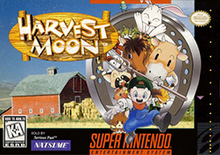History and Traditional Meaning of the Harvest Moon
Astronomical History of the Harvest Moon
The Harvest Moon, or Full Harvest Moon, has an interesting and unique astronomical history. This phenomenon occurs every year when the full moon is closest to the autumn equinox, which usually falls on September 22 or 23. The name “Harvest Moon” itself comes from the practical benefits this moon provided for farmers in ancient times.
Astronomically, the Harvest Moon has special characteristics that differentiate it from other full moons. Typically, the moon rises about 50 minutes later each day. However, around the time of Harvest Moon, this interval reduces to only around 30 minutes. As a result, the moon rises shortly after sunset for several nights in a row, providing additional light in the evening. This extra light allows farmers to harvest their crops late into the night without the aid of artificial lighting.
This phenomenon occurs because of the tilt of the moon’s orbit relative to the Earth’s equator. As the autumnal equinox approaches, the angle between the moon’s orbit and the horizon is smaller than usual, so the moon rises earlier each night. This is the scientific explanation behind the additional light provided by the Harvest Moon.
Additionally, the Harvest Moon often appears larger and more orange when it is closer to the horizon. This effect is caused by a phenomenon known as “Moon Illusion” and the scattering of atmospheric light. When the moon is near the horizon, the reflected light has to pass through more of the Earth’s atmosphere, which scatters blue light and allows red and orange light to dominate the moon’s appearance.
The Harvest Moon is not only an interesting astronomical phenomenon but also an important part of agricultural history and culture around the world. The additional light from this moon greatly helped farmers in harvesting their crops on time, and to this day, the Harvest Moon remains one of the most anticipated and cherished celestial sights every year.
The Role of the Harvest Moon in Ancient Agricultural Life
Harvest Moon or Full Moon Harvest has a very important role in ancient agricultural life. Before the advent of artificial lighting, farmers relied heavily on the natural light of the moon to maximize their time in the fields, especially during the crucial harvest season.
The Harvest Moon phenomenon provides significant additional light for several nights in a row. Typically, the moon rises about 50 minutes later each day. However, during the Harvest Moon, this interval is reduced to only around 30 minutes. As a result, the moon rises soon after sunset, providing additional light during the night. This extra light allowed farmers to work longer hours in their fields, harvesting crops late into the night without having to rely on the limited light from torches or oil lamps.
In ancient agrarian societies, every extra minute of light mattered. Harvesting must be done on time to ensure optimal quality and quantity of harvest. If harvest is late, produce can be damaged by bad weather or lose its nutritional quality. Therefore, Harvest Moon is an important ally for farmers. They could work longer hours to gather crops, ensuring sufficient food supplies to weather the long winter.
Besides its practical benefits, the Harvest Moon also plays an important role in the agricultural calendar. This month marks prime harvest time, and many harvest festivals are held to celebrate the success and blessings of the planting season. In many cultures, the Harvest Moon is celebrated with feasts, dances, and various ceremonies to give thanks for the bountiful harvest.
Harvest Moon not only helps in agricultural activities, but also strengthens social ties in agricultural communities. Harvest celebrations under bright moonlight create moments of togetherness and reflection, where communities can come together, celebrate their hard work, and prepare for the coming winter.
In the modern world, although we no longer rely on moonlight to work the fields, the Harvest Moon remains a symbol of prosperity, hard work, and humanity’s connection to nature. This phenomenon reminds us of the past, when life was very dependent on the rhythms of nature, and how moonlight could be a savior for farmers in ancient times.
Traditions and Festivals Inspired by Harvest Moon
The Harvest Moon, or Full Harvest Moon, has been the inspiration for various traditions and festivals around the world. This unique celestial phenomenon not only helps farmers in their daily lives but also becomes a celebratory moment rich in cultural significance.
Mid-Autumn Festival in East Asia
In China, Vietnam and other East Asian countries, the Harvest Moon coincides with the Mid-Autumn Festival. It is one of the biggest festivals in the region, celebrated on the 15th day of the 8th month in the lunar calendar. This festival is known for its special foods, especially mooncakes, which symbolize family integrity and unity. Families and friends gather to enjoy food, light lanterns, and admire the beauty of the full moon. Additionally, the legend of Chang’e, the goddess of the moon, adds a magical touch to the celebration.
Harvest Festivals in Europe
In Europe, especially in England and Germany, the Harvest Moon marks the time for holding harvest festivals. This tradition is deeply rooted in the agricultural life of society, where communities gather to celebrate abundant harvests. Churches often hold thanksgiving services decorated with harvest crops, such as wheat, fruit, and vegetables. After the service, a large feast was held with music, dancing, and abundant food. This festival not only celebrates a successful harvest but also strengthens social bonds and gratitude for nature’s blessings.
Thanksgiving in North America
In the United States and Canada, the Harvest Moon is often associated with Thanksgiving celebrations. Even though it is not directly celebrated on the full moon day, the spirit of gratitude for the harvest remains strong. Families and friends gather for communal meals, enjoying traditional dishes such as turkey, potatoes and pumpkin pie. Thanksgiving is a time to give thanks for a successful harvest and togetherness, reflecting the same spirit as Harvest Moon celebrations in other cultures.
Traditional Ceremonies in Africa
In some parts of Africa, the Harvest Moon is also celebrated with traditional ceremonies. For example, in Ghana, the Ewe people celebrate a harvest festival known as “Dzawuwu,” which often coincides with the Harvest Moon. During this festival, various activities such as dance, music and rituals are held to thank the ancestors and gods for the abundant harvest.




